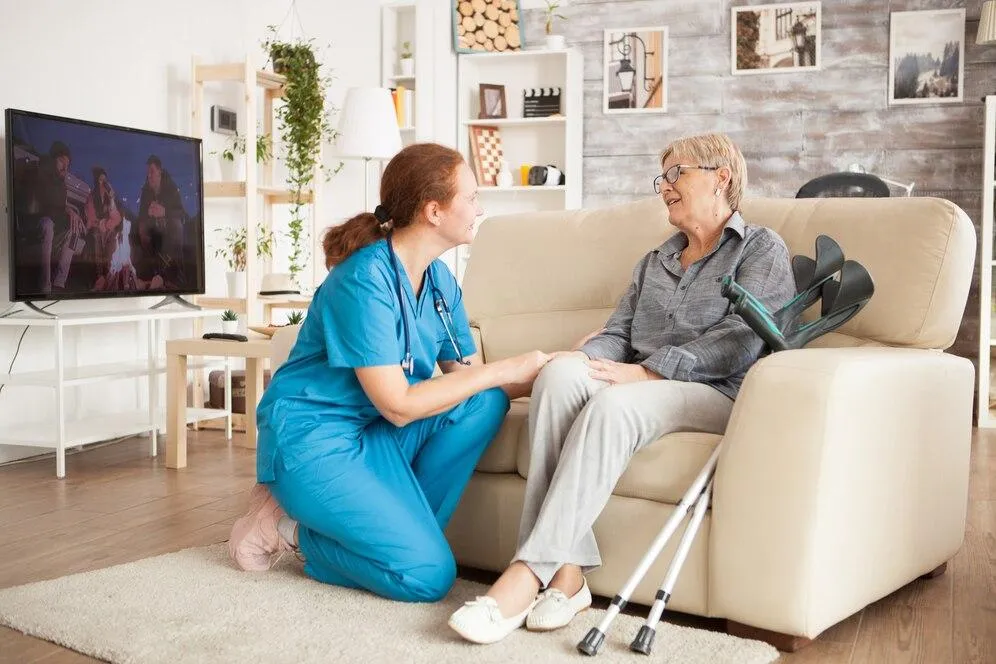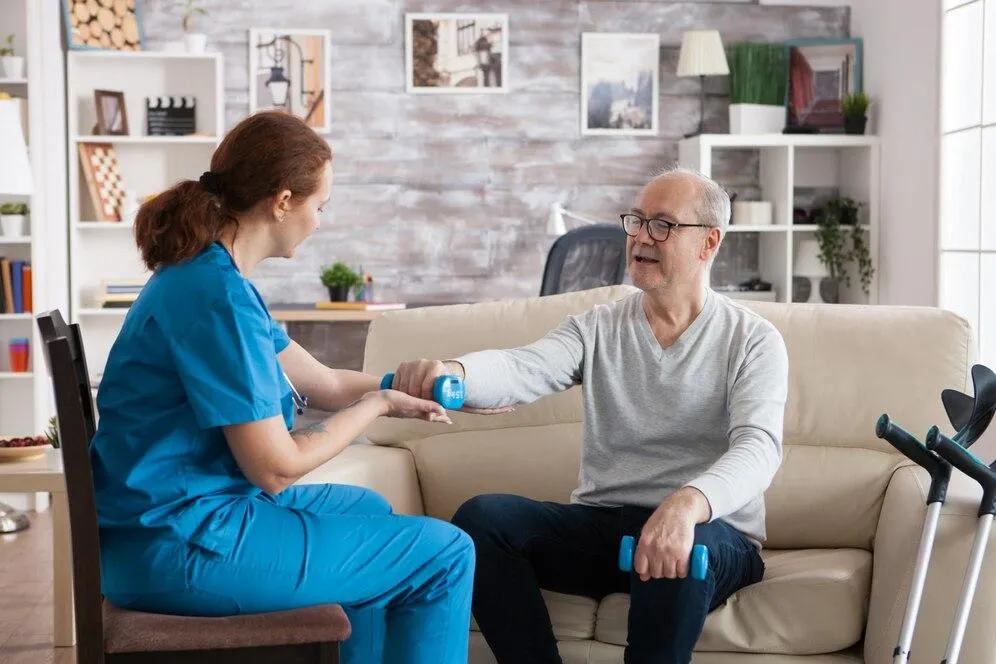Does your back hurt?
Vertebral Repair Procedures
Restoring Strength and Stability to Damaged Vertebrae
When a spinal vertebra is fractured, collapsed, or weakened, it can cause severe pain, spinal deformity, and reduced mobility. Vertebral repair procedures are minimally invasive surgeries designed to stabilize the bone, restore height, and relieve pain—often with dramatic, immediate results. At Desert Spine and Pain, neurosurgeon Dr. David L. Greenwald, M.D., FAANS, FACS specializes in advanced vertebral repair, including kyphoplasty and vertebroplasty, helping patients regain function and confidence after spinal fractures.

Over 100 5-Star Reviews!

Types of Vertebral Repair Surgery

Vertebroplasty


Kyphoplasty
What Are Vertebral Repair Procedures?
A Vertebral Repair procedure is a surgical procedure to fix a cracked, chipped, or broken vertebra. Special cement or implants are placed inside a broken vertebra to stabilize it and reduce pain. Vertebral augmentation procedures such as vertebroplasty and kyphoplasty involve percutaneous cannulation of the pedicle, balloon tamp creation of a cavity (kyphoplasty), and injection of bone cement (PMMA) to restore vertebral height, correct deformity, and relieve pain.
Common spine conditions treated with this type of spine surgery
Vertebral compression fractures from osteoporosis or trauma
Painful fractures not healing with conservative care (bracing, medications)
Tumor-related vertebral collapse (select cases)
Spinal deformity due to collapsed vertebrae
Vertebrae Repair Surgical Procedures
Kyphoplasty
Kyphoplasty is a minimally invasive spine procedure used to treat painful vertebral compression fractures, most often caused by osteoporosis, trauma, or spinal tumors. When a vertebra collapses, it can lead to severe back pain, spinal deformity, and loss of height. Kyphoplasty relieves pain and stabilizes the bone while also helping to restore vertebral height and alignment, improving posture and mobility.
At Desert Spine and Pain, Dr. David Greenwald performs kyphoplasty using fluoroscopic (X-ray) guidance for precision. Through a tiny incision, a hollow needle is guided into the fractured vertebra, and a small balloon tamp is inserted and gently inflated to create space and lift the bone back toward its normal height. The balloon is then removed, and the cavity is filled with medical-grade bone cement, which hardens within minutes to stabilize the bone and prevent further collapse.
This outpatient procedure takes less than an hour per level, and most patients experience immediate and significant pain relief, often standing and walking within hours. Because kyphoplasty uses a minimally invasive approach, recovery is rapid, with little to no scarring, minimal blood loss, and a quick return to daily activity. At Desert Spine and Pain, Dr. Greenwald’s advanced technique helps patients regain comfort, mobility, and confidence—restoring both strength and spinal alignment safely and effectively.
Vertebroplasty
Vertebroplasty is a minimally invasive spinal procedure used to treat painful vertebral compression fractures—most commonly caused by osteoporosis, trauma, or metastatic cancer. When a vertebra collapses, it can cause sharp, disabling pain and loss of height or posture. Vertebroplasty stabilizes the fractured bone by injecting medical-grade bone cement into the weakened vertebra, providing immediate strength and pain relief.
At Desert Spine and Pain, Dr. David Greenwald performs vertebroplasty under fluoroscopic (X-ray) guidance through a tiny incision in the back. A narrow needle is guided precisely into the fractured vertebra, and liquid cement is injected, hardening within minutes to stabilize the bone. The procedure typically takes less than an hour and is done on an outpatient basis, meaning most patients go home the same day.
This technique offers rapid and dramatic pain relief, allowing patients to stand and walk within hours after treatment. Vertebroplasty prevents further collapse of the vertebra and helps restore mobility and quality of life. Because of its minimally invasive nature, patients experience little to no scarring, quick recovery, and long-term stability, especially when combined with bone health management to prevent future fractures.
Vertebrae Repair Procedure: Step by Step

Anesthesia
Sedation or general anesthesia used.

Small incision
A needle is guided into the fractured vertebra using live X-ray.

Balloon (for kyphoplasty)
Balloon inflated to restore height and create space.

Cement injection
Bone cement injected to stabilize the fracture.

Closure
Bandage placed; no stitches needed.

Recovery
Most patients walk within hours and go home the same day.
If you think you may need back surgery, book a consultation with a spine surgeon today.
If you've been in an accident or are suffering from back pain and nothing you've tried has given you the relief you're looking for, contact us today. We can help.


Dr. David L. Greenwald, M.D., F.A.C.S.
Neurosurgeon | Spine Surgeon | Regenerative Medicine
Dr. David L. Greenwald, MD, FACS, is a board-certified spine surgeon renowned for his expertise in spine surgery, offering both traditional and minimally invasive procedures to treat a wide range of spinal conditions. Whether addressing herniated discs, spinal stenosis, fractures, deformities, or degenerative diseases, Dr. Greenwald combines surgical precision with the latest technology to achieve optimal outcomes. His approach emphasizes preserving mobility, minimizing tissue disruption, and promoting faster recovery. With decades of experience and a strong reputation for compassionate care, Dr. Greenwald has helped countless patients throughout South Florida find lasting relief and return to active, pain-free lives.
Recovery Timeline

Day 0
Walk within hours; discharged same or next day

Weeks 1-2
Pain continues to improve; resume light activities

Weeks 2–6
Return to most daily activities

Weeks 6–12
Begin or continue physical therapy and osteoporosis management

Months 3–6
Stable, pain-free mobility for most patients
Vertebra Repair Surgery Insights

Vertebrae Repair Surgical Steps
Approach: Percutaneous pedicular or extrapedicular access under biplanar fluoroscopy.
Kyphoplasty: Balloon tamp inflated under low pressure to restore vertebral height; cavity created.
Cement delivery: PMMA cement injected under low-viscosity phase to prevent leakage; monitored real-time under fluoroscopy.
Closure: Needle removed; small dressing applied.

Benefits
Rapid and significant pain relief (often within 24–48 hours)
Outpatient or short-stay procedure
Restores vertebral body height (kyphoplasty)
Prevents further collapse or deformity
Improves mobility and quality of life
Risks & Limitations
Cement leakage (rare, usually asymptomatic)
Infection, bleeding, or nerve injury (rare with neurosurgical technique)
Risk of adjacent level fractures if osteoporosis not managed
Not suitable for chronic, healed fractures

Why Choose Desert Spine and Pain?
Minimally invasive expertise: Dr. Greenwald specializes in advanced vertebral augmentation techniques
Rapid pain relief: Many patients walk pain-free the same day
Comprehensive care: We pair repair procedures with osteoporosis management to prevent future fractures
Patient-first philosophy: Clear communication and compassionate care throughout the process
Call Desert Spine and Pain today for a spine consultation. Relief is a phone call away!
Frequently Asked Questions
What’s the difference between vertebroplasty and kyphoplasty?
Vertebroplasty injects cement directly; kyphoplasty uses a balloon to restore height first. Both stabilize the bone.
How soon will I feel better?
Most patients report significant pain relief within 24–48 hours.
Will cement in my spine limit my mobility?
No. The cement stabilizes the bone but doesn’t restrict spinal motion.
How long do the results last?
Cement is permanent. Long-term relief depends on bone health, which is why we address osteoporosis as part of care.
How does Desert Spine and Pain perform vertebral repair differently?
We use microsurgical precision, MIS techniques, and comprehensive bone health management, ensuring both immediate and long-term results.
Book your Spine Care Consultation Today!


Desert Spine and Pain
Patient Centered & Partner Focused
Quick Links
Resources
Connect With Us
© Desert Spine and Pain. 2025. All Rights Reserved. Sitemap














